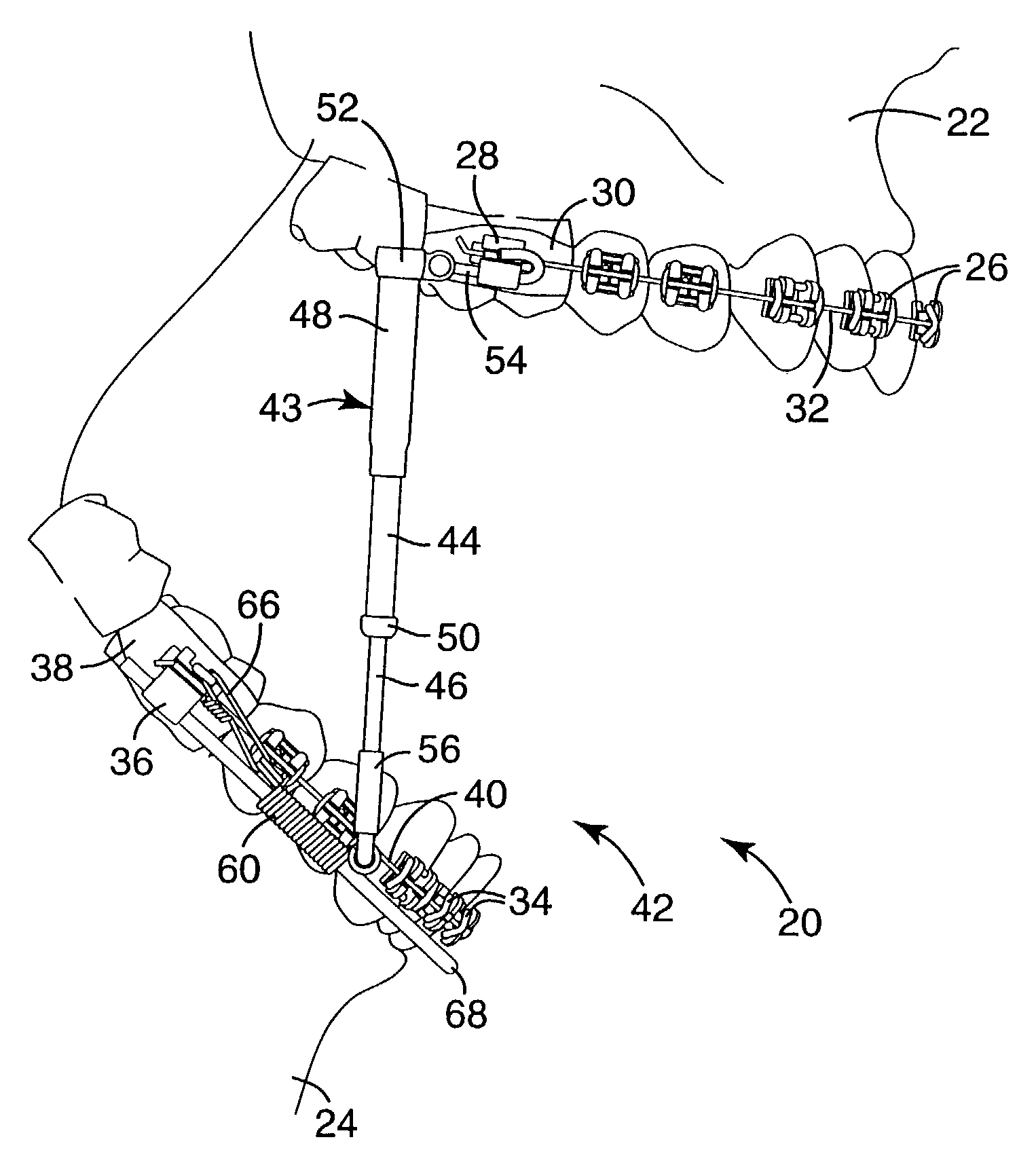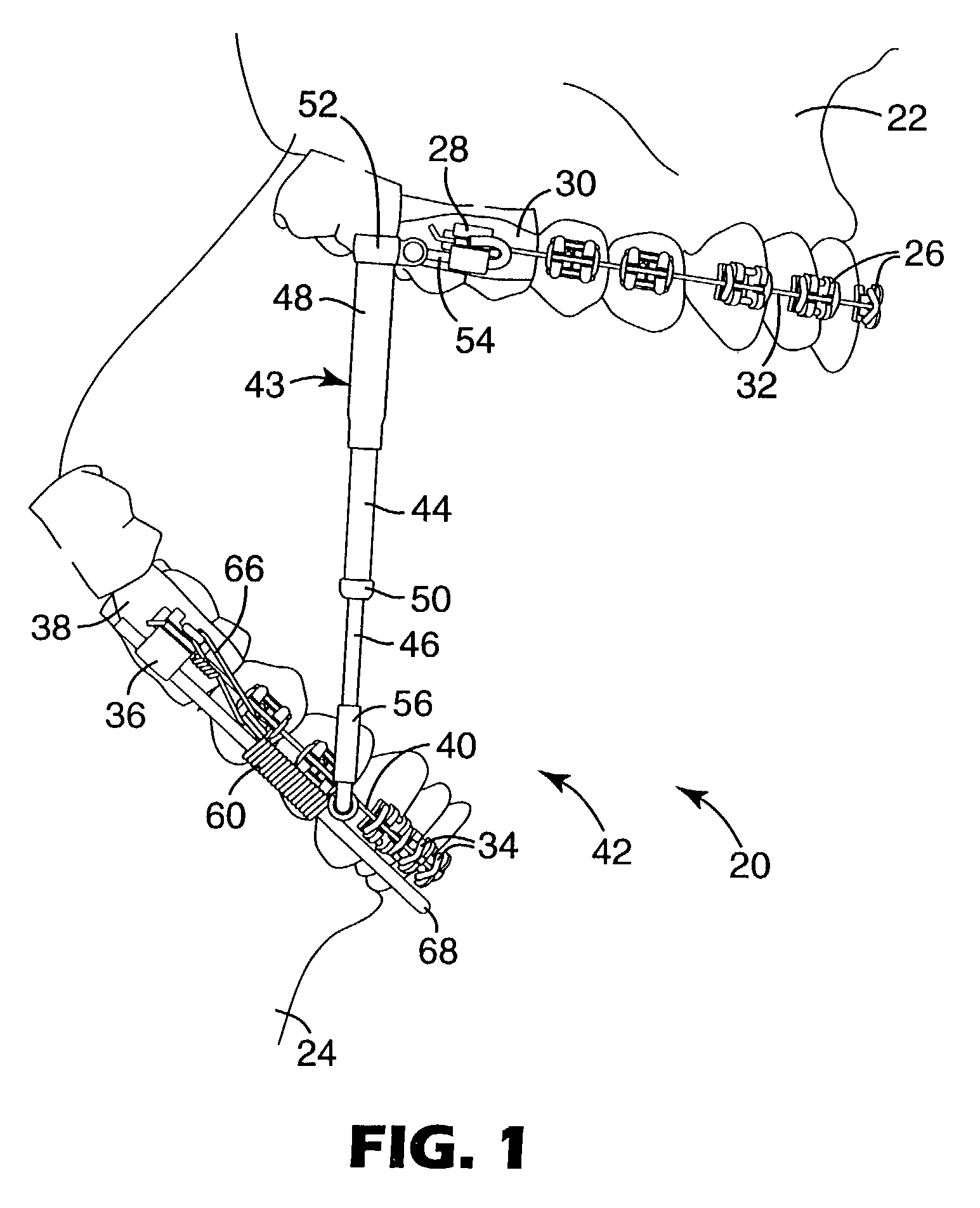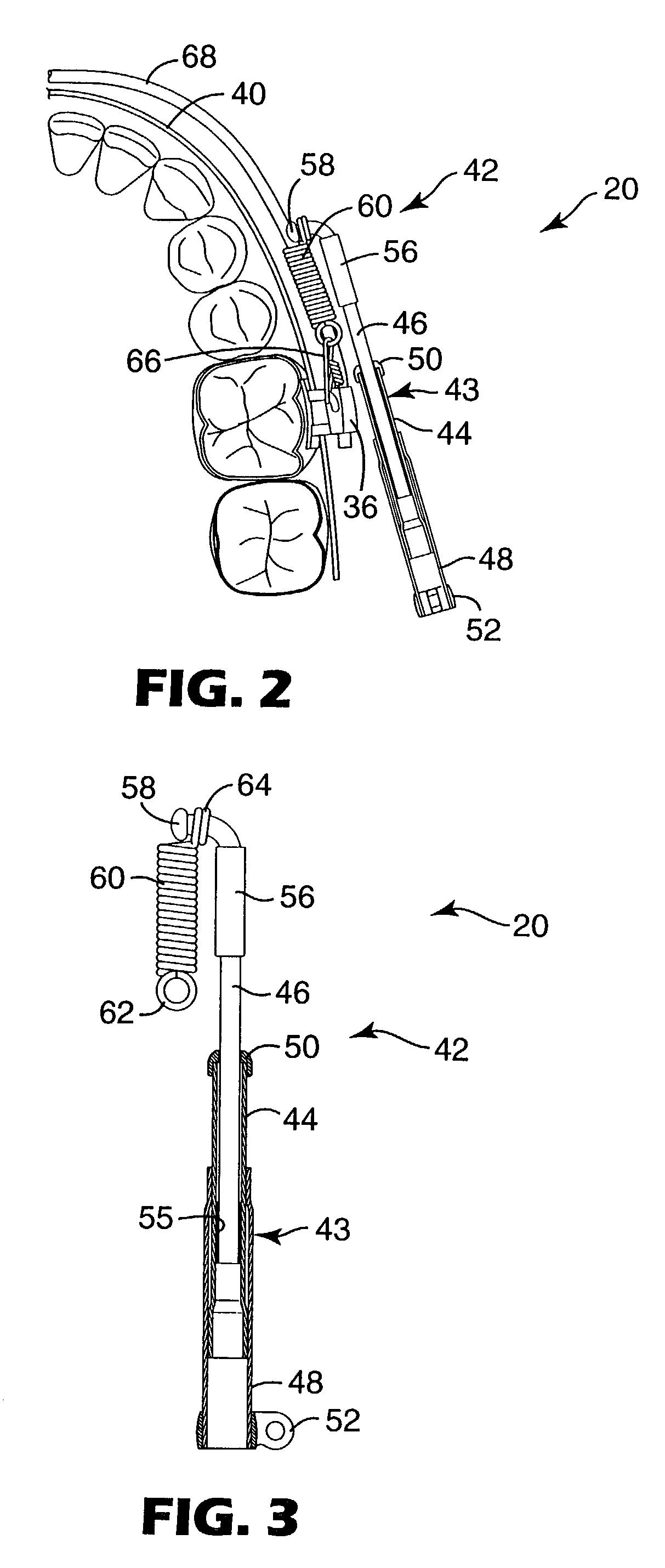Mandibular repositioning assembly
a mandibular and assembly technology, applied in the field of mandibular repositioning devices, can solve the problems of long treatment time, unsatisfactory headgear, and embarrassment, and achieve the effect of reducing possibility, reliably and effectively
- Summary
- Abstract
- Description
- Claims
- Application Information
AI Technical Summary
Benefits of technology
Problems solved by technology
Method used
Image
Examples
Embodiment Construction
[0037]FIG. 1 is an exemplary illustration of a patient undergoing orthodontic treatment. An orthodontic brace, generally designated by the numeral 20, is connected to the upper or maxillary jaw 22 of the patient as well as to the lower or mandibular jaw 24 of the patient. The jaws 22, 24 are shown in their fully open position in FIG. 1.
[0038]The brace 20 includes a series of upper appliances or brackets 26 that are connected to anterior, cuspid and bicuspid teeth of the upper jaw 22. The brace 20 also includes a molar appliance such as a buccal tube 28 that is connected to the upper right first molar tooth. In this example, the buccal tube 28 is fixed to an orthodontic band 30 that encircles the first molar tooth. An upper archwire 32 extends through slots of the upper brackets 26 as well as through a passage in the buccal tube 28.
[0039]The brace 20 further includes a series of lower appliances or brackets 34 that are fixedly connected to the anterior, cuspid and bicuspid teeth of t...
PUM
 Login to View More
Login to View More Abstract
Description
Claims
Application Information
 Login to View More
Login to View More - R&D
- Intellectual Property
- Life Sciences
- Materials
- Tech Scout
- Unparalleled Data Quality
- Higher Quality Content
- 60% Fewer Hallucinations
Browse by: Latest US Patents, China's latest patents, Technical Efficacy Thesaurus, Application Domain, Technology Topic, Popular Technical Reports.
© 2025 PatSnap. All rights reserved.Legal|Privacy policy|Modern Slavery Act Transparency Statement|Sitemap|About US| Contact US: help@patsnap.com



